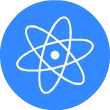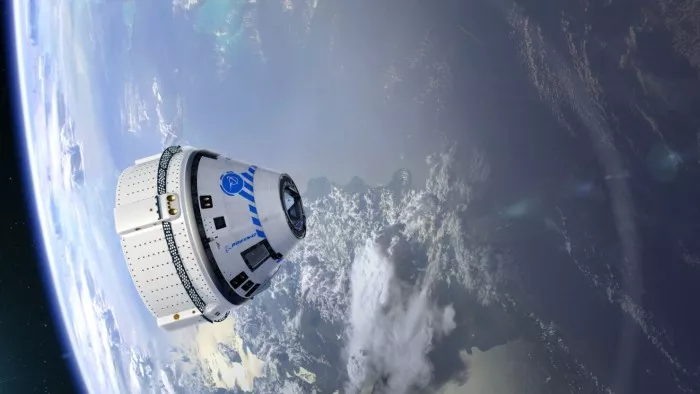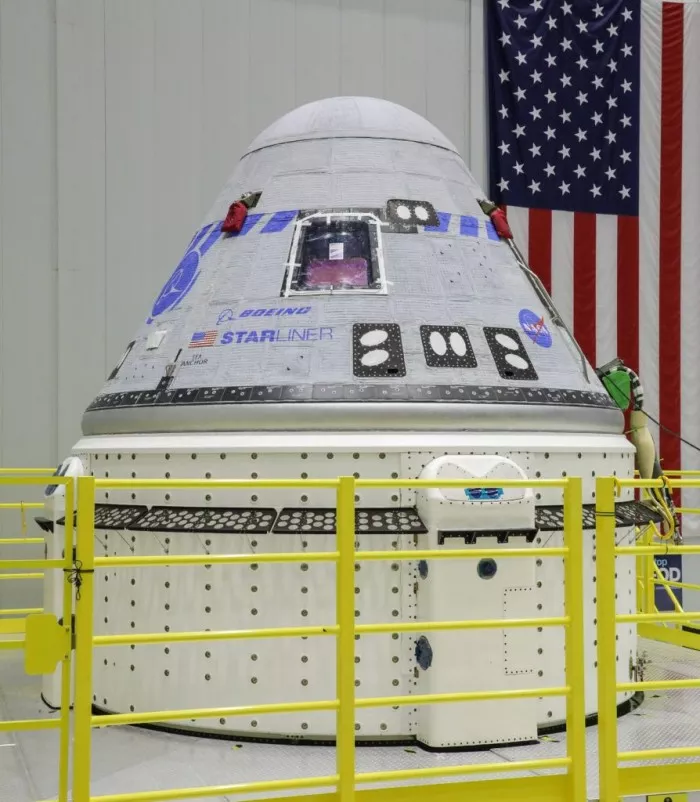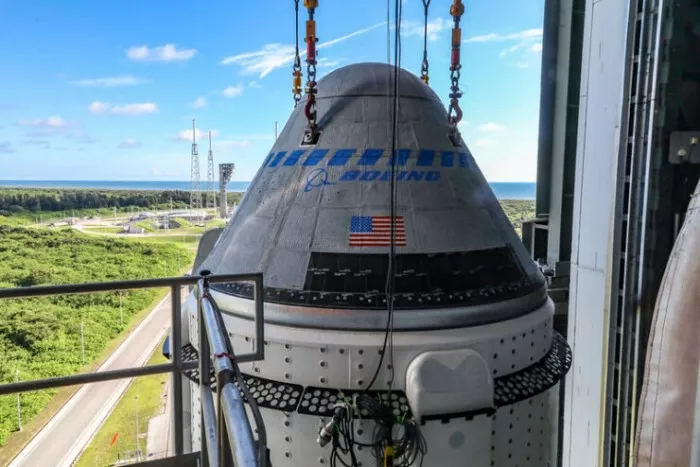According to wccftech, as part of the media conference call for its Orion spacecraft's second operational flight test (oft-2), Boeing representatives assured media members that the rapid success of SpaceX's Dragon spacecraft had no impact on them** Both Boeing and SpaceX are part of NASA's commercial crew program, which aims to develop the continuous ability of the United States to carry out manned flights to the international space station (ISS).
Michelle Parker, vice president and deputy general manager of space and launch of Boeing, explained in her prepared speech the measures taken by her company to ensure that the starliner spacecraft is ready to fly into the sky later this month. The mission, known as oft-2, was originally scheduled to launch in July last year, but was delayed because an accident at the International Space Station prevented the station from docking. Then, in August a month later, Boeing withdrew from the launch attempt, explaining that the valve problem on the spacecraft made the launch impossible.
Now, nine months after discovering the problem, Boeing is convinced that the starliner's propulsion valve is not faulty. Parker, the chief engineer of the test vehicle after the launch delay, outlined:
The ship looks very good, its performance is very good, and it is ready for tomorrow's trip. The team is also ready. They have been rehearsing. They are ready. We look forward to the successful task on the 19th. I just want to say a few words about the problem of oxidant isolation valve. We have been trying to solve this problem since our last attempt in August. Significant progress has been made. We have been able to narrow the root causes and take mitigation measures, and I will talk about it to ensure that we no longer have such concerns. Therefore, we are confident that we have solved this problem and have the right procedure to move forward.
If you remember, when we first encountered this problem in August, we immediately set up a comprehensive investigation team. Therefore, it is the participation of all team members, NASA, Boeing and ourselves to look at all possible causes in order to understand the problem, mitigate it and return to the launch pad as safely and effectively as possible. I'm glad to say that the team has achieved this goal and we are ready. As you may recall, we followed a rigorous process to ensure that we understood the behavior; We use fault tree analysis; We looked at all the potential causes, eliminated all the potential causes with facts and data, and honed the root causes.
Therefore, this is still the reason we talked about in October, that is, the combination of nitrous oxide or nto in the valve, ambient humidity and the aluminum shell of the valve. Therefore, you need to combine all three aspects to make the first two aspects, namely nto and ambient humidity, react to produce nitric acid, and then react with the aluminum shell of the valve to produce corrosion products, which then lead to preventing the valve movement. This is a very small movement, such as 30mm movement, but the existence of these corrosion products can hinder this progress.
So this is our root cause. We have completed the tests inside and outside the ship. So, as you know, we did send the spacecraft back to the factory. We did a lot of tests on service module 2 and tested the valves with this problem to understand their behavior and really run in what we saw. Since then, we can also remove these valves and disassemble them. One valve is stuck, one valve is intermittent, and the other valve is not stuck. What we see in these valves are the corrosion products we mentioned. Therefore, we can confirm the existence of these products in the way I just said. We have also done the material test outside the spacecraft. We have also done the valve test outside the spacecraft with the valve not on the spacecraft in Baisha to confirm these corrosion products produced by these three components. In this test, we also exposed these valves to the environmental conditions seen by the valves and those we expected to see on oft-2, and confirmed that our mitigation methods were appropriate.
Therefore, when I talk about the mitigation measures we have taken again, mark also mentioned this point. As I mentioned, in order to produce this reaction, you need these three components, namely nto, moisture in the air, and aluminum shell. Without these three components, you will not react. Therefore, if there is no water, if you can eliminate the water in the valve, you will not have this reaction and will not cause corrosion. Therefore, we have done some mitigation measures, including dry cleaning of the valve, so the valve has compartments. We asked cn2 to clean the valve to prevent any moisture from entering the valve.
We also seal the potential moisture path in the electrical connector to ensure that we do not get any ambient humidity through this path. Therefore, these two things will prevent moisture from entering the valve to start the reaction. In addition, we will load nto later. Mark mentioned that the spacecraft has been loaded. We will load it later in the process, so the exposure time of NTO is less. We also increased the circulation of the valve in operation. After loading, we cycle it every two to five days until we launch, so as to ensure that the valve remains in operation. We have been doing this cycle, we have done it very successfully, and we will continue to do so. The last cycle will take place on the 17th, and then in the nominal countdown launch program on the 19th, we will cycle the valve again.
Later in the event, Marcia Dunn of the associated press tried to lead the topic from the technical level to the perspective of motivation, and asked Boeing representatives whether they were frustrated watching SpaceX regularly launch the crew to the international space station.
In response, Ms Parker said:
...... Our focus is to really arrive safely, complete tasks safely, learn as much as possible, and provide a great service to our NASA customers, which is our focus now. I think there are many exciting things happening in space. As space professionals, we are always excited about what happens. We certainly want to be part of it. We look forward to this successful mission, which is our focus. The real focus is to achieve a successful mission and provide this ability to our customers.
Boeing vice president and CST-100 starliner project manager Mark Nappi joined her, stressing that safety is the most important for his company.
According to mark:
I just want to add. On behalf of the labor force, I often talk to them. They are professionals and they know what we do here. It's very difficult to build, develop and launch this type of aircraft, so they have got it. They focus on doing it in the way of laser. That's their real idea. Therefore, we will do this with the safest and best quality. When we launch, we will launch.
Finally, Kathryn leuders, deputy director of NASA's space operations mission, clarified that Boeing and SpaceX were part of the same team, and her organization thanked SpaceX for providing it with the ability to conduct detailed safety investigations and the option to conduct human space flights at the same time.
As MS leuders explained:
Marcia, I want to say that we, this is about the right of a team, so I am very grateful that Boeing didn't, stitch didn't take any shortcut. We are doing it step by step. We did extensive tests. Make sure we remove the hardware from the ship and do a detailed fault investigation. Make sure our team really understands this before the spacecraft starts and brings them into launch activities. Therefore, this really shows me a lot of maturity and not eager for success. Obviously, we are also very grateful to SpaceX for giving us this opportunity to have time and flight. These are the things you must do when you do manned spaceflight. I think as the joint team of Boeing and SpaceX, we really appreciate that these two suppliers operate in this way and can provide such support.
NASA Boeing's oft-2 mission will fly into the sky from the agency's launch site in Florida on May 19. If successful, it will pave the way for starliner's first manned test after returning to earth.



